Galápagos: Santa Cruz (Indefatigable) Island
Friday, July 22, 2011: We woke up this morning to find ourselves on the outskirts of the harbor at Puerto Ayoro, Santa Cruz (indefatigable) Island. For once, we were not on the largest ship. There were two larger vessels, including the Natinoal Geographic Islander, that we anchored nearby. There were also many smaller vessels closer to the docks.
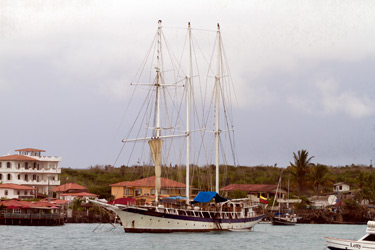 |
| Sailing Ship |
A Brown Pelican decided that our ship was a good place to hang out.
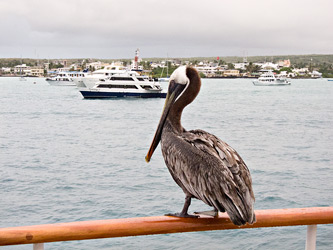 |
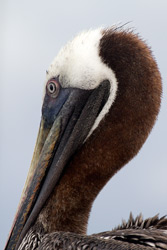 |
| Brown Pelican | |
As usual, breakfast was at 7:30. After breakfast we took pangas into town. As we rode though the harbor, we realized there were many more boats than we thought. Once on shore, we got on buses to visit several places on the island. Unfortunately, none of the VENT guides was with our group. At first, we assumed this was no big deal because we would soon meet up with the rest, as our VENT guides also assumed. It turned out not to be the case, and ultimately meant we would do very little birding this morning.
The first stop was at a lava tube. This one was rather large, and had a smoother bottom (and sides) than might be expected. The second stop was at a farm that is part of a revegetation project. More importantly for us, it had wild Galápagos Tortoises! Perhaps “wild” is the not the right word for such a slow-moving creature, but by giant tortoise standards, they are wild. We also spotted a Small Tree-Finchs here. The problem was that we did not have any specific birding time, and that it wasn't until the 3rd or 4th bird that we got the guide to pay attention (she did know the birds, but was ignoring the finches). We also found White-cheeked Pintail here.
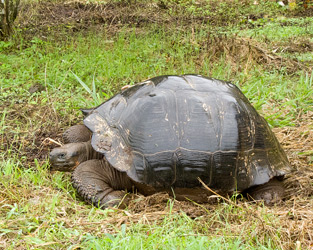 |
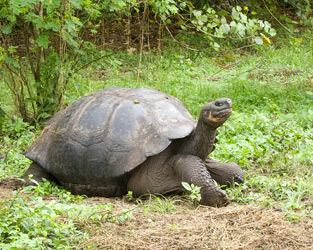 |
| Galapagos Giant Tortoises | |
Our third stop was in an interesting high-elevation forest as Los Gemelos. The trees are in the aster family, and covered with some type of liverwort. The sight here were two craters formed by the collapse of then-empty underground magma chambers below. The guide referred to them as sinkholes, but I doubt that is the right term. The guide did spot a Green Warbler-Finch as we crossed the road the between the craters, but allowed us no time to bird. This was particularly unfortunate here as it was our best chance for Woodpecker Finch.
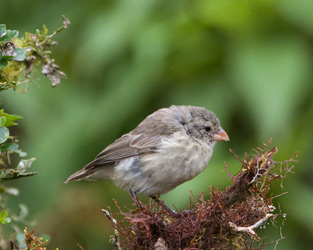 |
| Small Tree-Finch |
On the way back to town, a couple of us saw a Great Egret beside the road. I also got my first glimpse of a Galapagos Mockingbird. Back at the dock, we took a panga across the harbor and started walking a short path to our lunch spot, the Finch Bay Eco Hotel (like the Isabela II, owned by Metropolitan Touring). We spotted our first Common Cactus-Finch on our walk to the hotel, and were surprised to see some White-cheeked Pintail hanging around at the pool. The rest of the group was nowhere to be seen, but we went ahead and ate.
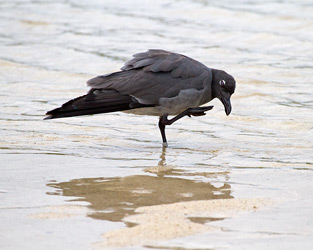 |
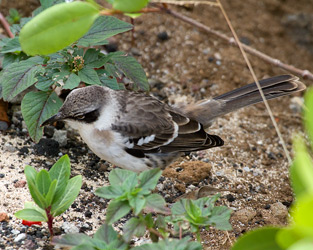 |
| Lava Gull | Galapagos Mockingbird |
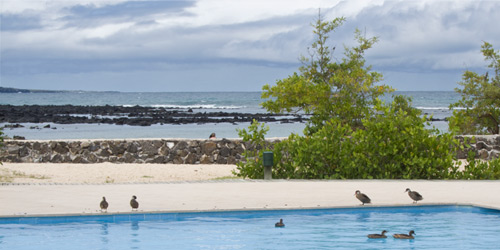 |
|
| White-cheeked Pintail at the Pool | |
After lunch we birded around the area. We got good looks at some Galapagos Mockinbirds. We also found a young heron that seemed to be more Lava Heron than Striated Heron, and a surprising dark young Yellow-crowned Night-Heron. The rest of the group arrived about 45 minutes after us, reflecting the birding time that we didn't have.
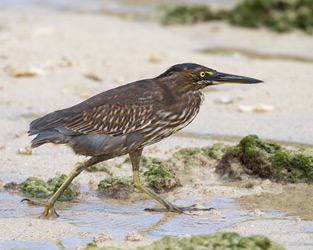 |
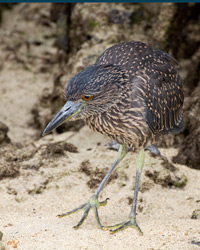 |
| Lava Heron | Yellow-crowned Night-Heron |
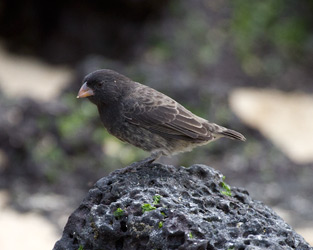 |
|
| Medium Ground-Finch | |
Eventually, we left for the Darwin Research Station. We walked back to the dock, got in a panga to cross the harbor, and then took a bus. This time, we had one of the VENT guides with us. The research station has a tortoise breeding program. Currently, introduced species, esp. rats and cats, are a major problem for the tortoises on Santa Cruz and some of the other islands. They kill the baby tortoises. Tortoise eggs are collected from the wild and brought to the research station for hatching. They raise them until they are large enough to be safe from rats and cats, then release into the wild.
It is also a decent birding site. We saw more Common Cactus-Finches, a couple of Vegetarian Finches, and our first Large Ground-Finch. And yes, this time we had some time to bird.
 |
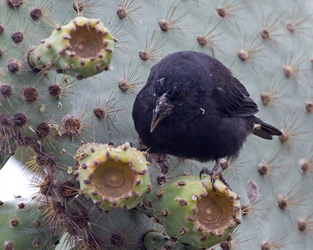 |
| Common Cactus-Finch | |
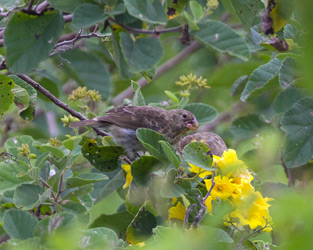 |
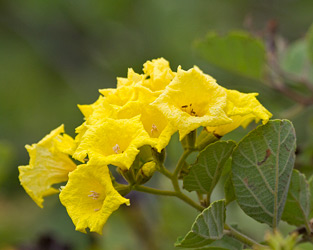 |
| Vegetarian Finches | Muyuyu |
 |
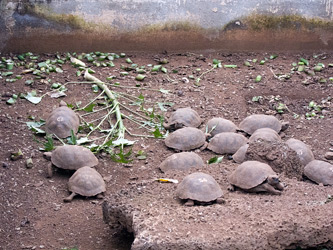 |
| Adult Tortoise | Young Tortoises |
After we left the research station, we had time to shop in town if we wanted. A number of us took the first panga back to the boat. We were surprised by the size of the swells as we returned to the ship. I don't think anyone minded having to wear the life jackets on the panga this time. There were some minor difficulties getting back on the ship. When they transferred the backpacks, they panga slipped away from the boat. They managed to not drop them in the ocean, and keep a good grip on the boat as we got back on the ship. The swells increased over the next hour, and by the time the last group got on board, the boarding had become rather exciting. Some of us who were already on the ship watched the process from the sundeck (and also the boarding process for the Islander, which had similar issues).
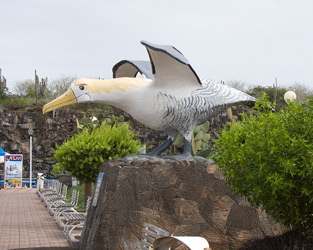 |
| Albatross Totem |
We begin the long navigation to Genovesa tonight, and should be there around breakfast. This means there will be an opportunity for seabirding at dawn.
My bird total for the day was 27 species, including 6 lifers. My trip total increased by 8 to 43 species, with 27 lifers.
Aboard the Isabela II, Galápagos